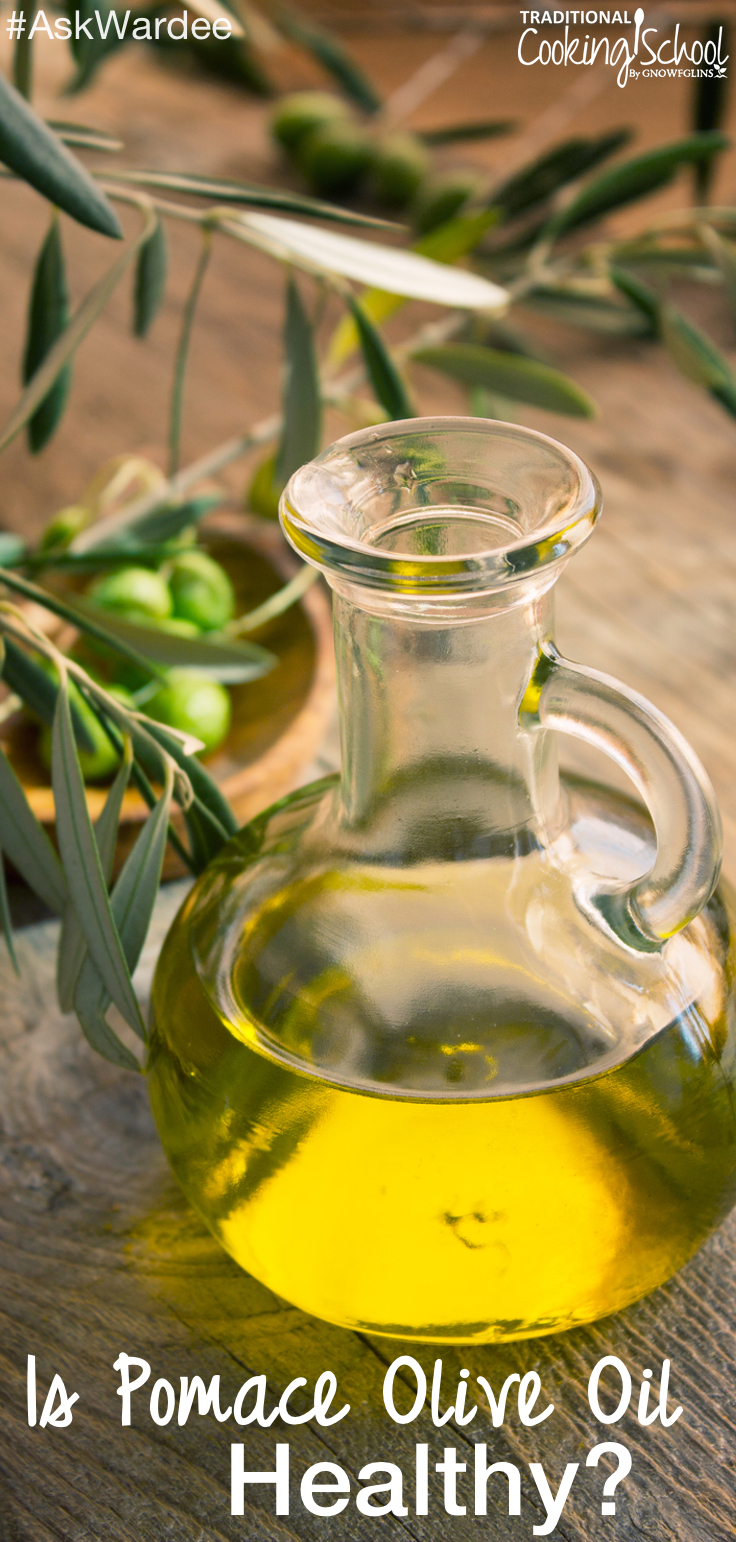
“Can I use inexpensive pomace olive oil for frying?” asks Lucila D. on today’s #AskWardee. I’m sharing my thoughts below!
I broadcast #AskWardee live each Wednesday at 10am Pacific (1pm Eastern) on Periscope and Facebook Live. Both the podcast and video replay of this week’s show are below. Enjoy!
Subscribe to #AskWardee on iTunes, Stitcher, YouTube, or the Podcasts app.
The Question:
Lucila D. asks:
“I am writing to ask you about the safety of using pomace olive oil for frying. Here in Ecuador, coconut oil is too expensive, and I’m looking for a healthier option. The pomace olive oil here is a little cheaper. Thank you very much for your help.”
Before I give my answer…
Ever heard of pomace olive oil?
It’s the last bit of oil that can be extracted from olives, making it decidedly not extra-virgin (that’s the first pressing)…
…yet also pleasantly inexpensive.
Can or should it be used in a healthy kitchen, though? And what about for frying?
My Answer:
Olive pomace oil is olive oil that is extracted from olive pulp after the first press. Once the mechanical oil extraction of olive oil is complete, approximately 5-8% of the oil remains in the pulp, which then needs to be extracted with the help of solvents, an industrial technique used in the production of most other edible oils including canola, peanut, sunflower, etc. (Source.)
So did you catch that? To get the rest of the 5% to 8% oil left in the pulp after mechanical extraction (pressing), they use a solvent (or chemicals) to get the rest out. It’s the same way that other veggie oils are produced.
According to my research, the extraction process may also involve heat. So the pomace olive oil is also not cold-pressed. And there are several grades of pomace oil, from crude (unfiltered) to filtered.
Because of the solvent that may be in the oil, pomace olive oil is not called simply “olive oil” because it isn’t pure olive oil.
Is pomace olive oil healthy?
Due to the use of solvents and heat, I wouldn’t recommend pomace olive oil for consumption at all, let alone frying.
In fact, I don’t recommend any kind of olive oil for frying. It doesn’t have a high smoke point and is denatured quickly with high heat. Olive oil is susceptible to rancidity — much more so than coconut oil which tends to be shelf-stable for months, if not years.
This doesn’t mean you can’t sauté or oven roast vegetables occasionally using olive oil. Keep in mind that the extra virgin olive oil (first pressing) has the highest smoke point (400 degrees F) and will perform best here. But it is the most expensive. Mostly, I would reserve olive oil (extra virgin, if possible) for fresh uses — like salad dressings and drizzling on hummus or as a condiment.
I have now and then used pomace olive oil for making soap. I feel it’s an inexpensive choice and makes a good castile soap.
What are other inexpensive options for frying?
What pastured animal fat do you have locally that you could render for frying? These tend to be the cheapest and BEST fats for frying.
You might also look for grapeseed or avocado oils (expeller or cold-pressed) — their smoke points are even better than extra-virgin olive oil at 485 degrees Fahrenheit and 480 degrees Fahrenheit, respectively. I’m not sure what they cost in your area. Here in the United States, grapeseed oil is reasonably priced while avocado oil is expensive.
Links Mentioned:
- Free Traditional Cooking Videos
- Wikipedia — Pomace Olive Oil
- Extra Virgin Olive Oil
- Grapeseed Oil
- Avocado Oil
What Is The #AskWardee Show?
The #AskWardee Show is the live weekly show devoted to answering your niggling questions about Traditional Cooking: whether it’s your sourdough starter, your sauerkraut, preserving foods, broth, superfoods or anything else to do with Traditional Cooking or your GNOWFGLINS lifestyle.
I share tips and resources, plus answer your questions about Traditional Cooking!
The Details
When: Wednesdays at 10am Pacific / 1pm Eastern
Where: @TradCookSchool on Periscope or Traditional Cooking School on Facebook
What If You Can’t Make It?
Don’t worry. You can catch the replays or listen to the podcast!
- Come back here to AskWardee.TV; all replays will be up within hours of airing live; the print notes are always posted at the same time I go live.
- Follow @TradCookSchool on Periscope or Traditional Cooking School on Facebook to view the replay.
- Subscribe to the #AskWardee podcast on iTunes, Stitcher, YouTube, or the Podcasts app. While you’re there, be sure to leave a rating and review!
Want To Get YOUR Question Answered?
Here’s how to submit your question. If we answer it on #AskWardee, you’ll get a gift!
Or, you can…
- Tweet your question to @TradCookSchool on Twitter; use hashtag #AskWardee
- Send an email to wardee at AskWardee dot tv — add #AskWardee to your email so I know it’s for the show
Please do NOT add future questions for #AskWardee to the comments of this post because they might get missed!
Have you ever heard of pomace olive oil? What fat do you typically use for frying?
We only recommend products and services we wholeheartedly endorse. This post may contain special links through which we earn a small commission if you make a purchase (though your price is the same).


Hi!
I try not to use pomace when cooking. But I do use it for soap making, because well… it is cheap! I don’t use it for creams or lotions or anything that will stay on, but I figure that soap will quickly be rinsed off of our skin.
Thank you Wardee for all the research. I reallly appreciate your extense answer.